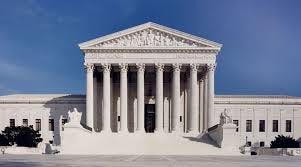Supreme Court to Decide Fate of Federal Government Restructuring
Peace Corps agency among those affected
A major constitutional question is now before the Supreme Court as the Trump administration and federal employee representatives clash over the scope of executive authority to restructure government agencies.
The Legal Question
The Supreme Court is considering whether to lift a preliminary injunction that currently blocks implementation of Executive Order 14210, the administration's "Workforce Optimization" directive. The order aims to significantly downsize and reorganize federal agencies—what President Trump has called the "Manhattan Project of our time."
Federal employee representatives filed a brief on Monday opposing the administration's request to proceed with the restructuring while litigation continues. Both sides agree the stakes are enormous, though they disagree on the proper path forward.
The Administration's Position
The Trump administration argues that Executive Order 14210, issued in February 2025, represents appropriate use of existing executive authority to optimize government operations and eliminate inefficiencies. Officials contend the order primarily involves planning processes and falls within the President's constitutional duty to "take care that the laws be faithfully executed."
The administration maintains that agencies retain discretion in how they implement the directive and that the restructuring will make government more efficient and responsive to taxpayers.
The Opposition's Argument
Federal employee representatives and allied organizations argue the executive order exceeds presidential authority by unilaterally restructuring agencies without congressional approval. Their brief warns that once implemented, the changes would be "impossible to unscramble" if courts later find the President overstepped his authority.
The legal team cites over 100 years of precedent showing presidents have historically sought congressional authorization for major government reorganizations. They note that during his first term, President Trump requested such authority from Congress but did not receive it.
What the Order Requires
Both sides acknowledge that federal agencies have begun developing Agency RIF and Reorganization Plans (ARRPs). The implementation has included:
Restructuring offices and transferring functions between agencies
Significant workforce reductions in many departments
Elimination of programs deemed "discretionary" by the administration
Accelerated timelines for completing organizational changes
Agencies Affected
The case involves virtually every major federal department and agency, from Defense and State to Agriculture and Veterans Affairs. Notable agencies specifically named include AmeriCorps, the Environmental Protection Agency, the National Science Foundation, and the Peace Corps.
The Peace Corps' inclusion is particularly significant given its 60-year bipartisan history of sending American volunteers to work on development projects worldwide. Its potential restructuring illustrates the broad scope of the proposed changes.
The Constitutional Question
At its core, the case asks: Can the President unilaterally restructure the federal government, or must such changes go through Congress?
The administration argues this falls within executive authority to manage government operations. Opponents contend it represents an unprecedented expansion of presidential power that bypasses the legislative branch's role in creating and funding agencies.
Former Assistant Attorney General Antonin Scalia testified to Congress in 1977 that there are only two constitutional paths for reorganization: Congress must either delegate such authority to the President or adopt changes through the legislative process.
Potential Impacts
The restructuring could affect hundreds of thousands of federal employees and the services they provide. Supporters argue it will create a more efficient, cost-effective government. Critics worry about disruption to essential services and programs that Congress specifically authorized.
Both sides acknowledge that if the restructuring proceeds and is later found unconstitutional, reversing the changes would be extremely difficult.
What's Next
The Supreme Court faces a critical timing decision: whether to allow the restructuring to continue during litigation or maintain current operations until constitutional questions are resolved.
The administration argues delays will prevent needed reforms and waste taxpayer money. Opponents contend that proceeding before judicial review could create irreversible changes that undermine both congressional authority and the rule of law.
The Court's decision will likely influence the balance of power between branches of government and could set precedent for how future presidents approach federal restructuring. Both sides emphasize they want the constitutional questions resolved properly—they simply disagree on whether that should happen before or after implementation begins.
A supplementary annex is available on the Supreme Court docket for this case, which can be found here: https://www.supremecourt.gov/search.aspx?filename=/docket/docketfiles/html/public/24a1174.html
Disclaimer: The views, opinions, and perspectives expressed in this newsletter do not necessarily represent or reflect the official policy, position, or views of the Peace Corps agency or the United States government.




What power will congress have if the President can destroy any programs he wishes to destroy without congress having any input? When do you think the court will take this issue up? It seems to me that they are going to just keep delaying and it will be too late to change things. Sad.